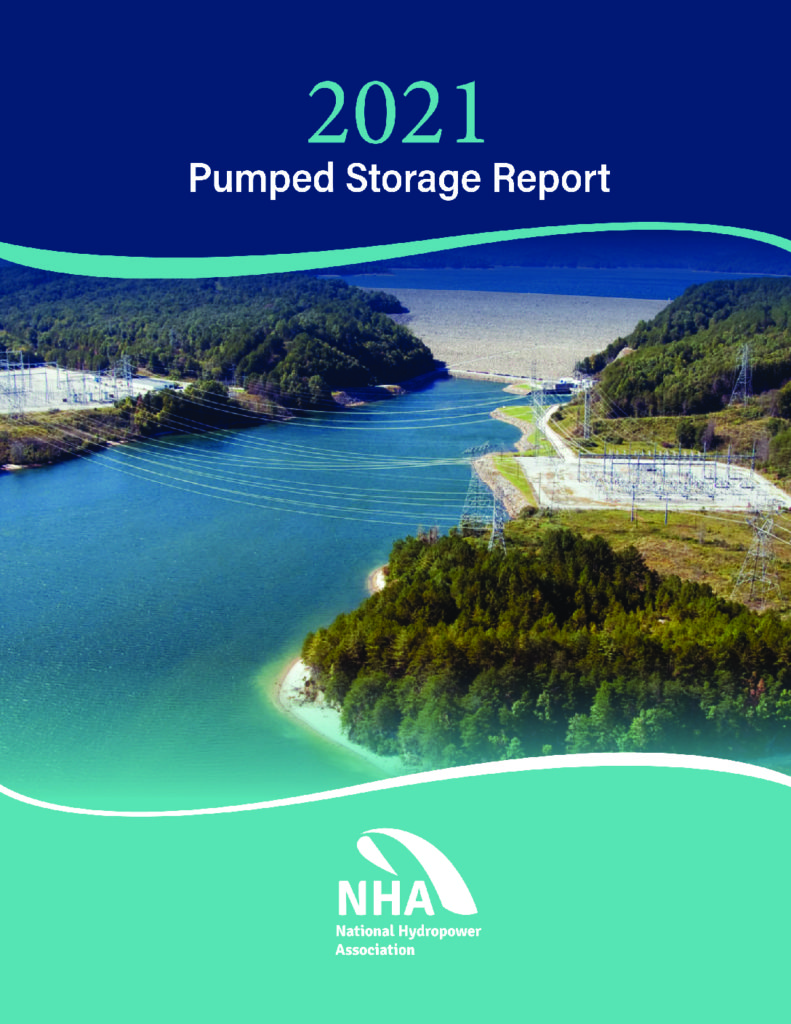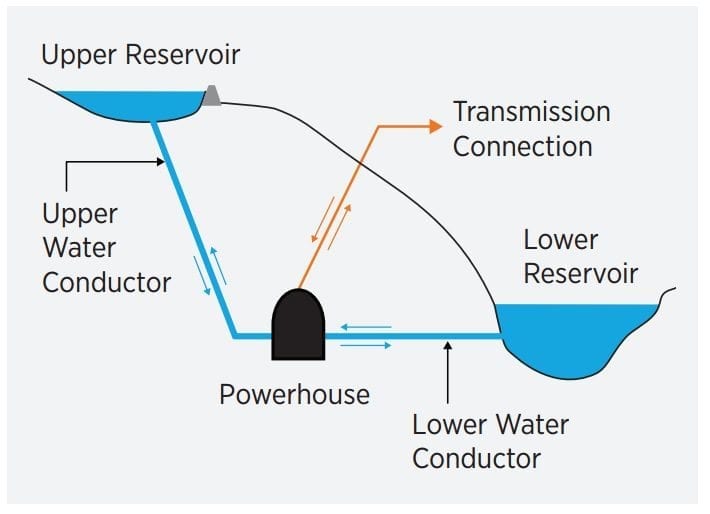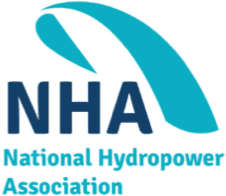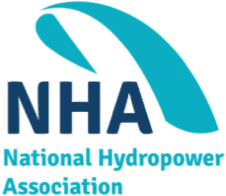Pumped Storage Hydropower is America’s Energy Storage
Everything old is new again. Hydropower is making its comeback, and not just as a generation source. Water can act as a battery, too. It’s called pumped storage and it’s the largest and oldest form of energy storage in the country, and it’s the most efficient form of large-scale energy storage.
Hydropower was America’s first renewable power source. It is often mistakenly considered a tapped resource, but according to the U.S. Department of Energy’s 2016 Hydropower Vision report, hydropower’s capacity can sustainably add 50 new gigawatts by 2050 — 36 GW of which is pumped storage.
NHA Report Identifies Market, Regulatory Challenges to Pumped Storage Hydropower’s Growth

NHA Unveils 2018 Pumped Storage Report
The National Hydropower Association (NHA) released the 2021 Pumped Storage Report, which details both the promise and the challenges facing the U.S. pumped storage hydropower industry. Pumped storage hydropower (PSH), the nation’s largest source of grid-scale energy storage, can help solve some of the most urgent problems facing the electric power sector today. Despite ensuring that electric supply securely matches electric demand and in real-time, market, policy and regulatory burdens continue to hinder its growth.
The Report finds that some of PSH’s key attributes, such as grid reliability and the integration of additional renewable resources, are not adequately compensated within the current environmental and power markets and regulatory constructs. For example, wholesale power market services such as frequency regulation, ramping and spinning reserves are not valued in many of markets today, or valued in one independent system operator’s market rules and product definitions, but not in another. In many cases, these are typically real-time or day-ahead markets and there are no long-term market products where a bulk storage project can attract investors seeking revenue certainty through long-term power purchase agreements or defined value streams.
PSH project developers also face is a lengthy licensing process. Although recent changes created a two-year expedited licensing process for closed-loop or “off-river” pumped storage, the implementation of this process has made it difficult for projects to qualify. As of the date of this publication, no PSH project has successfully navigated the expedited process.
In addition to outlining the challenges facing the PSH industry, the Report provides a series of recommendations to guide the energy industry, regulators, and policymakers.
Market and Policy Improvements
- Develop market products that allow flexible resources to be compensated for providing services that help meet electric grid requirements, including fast responding systems that provide critical capacity during key energy needs.
- Develop market mechanisms that evaluate energy storage technologies based on their abilities to provide key supporting services to the overall electric grid, taking into consideration project lifecycle costs, performance and energy storage system degradation.
- Develop market mechanisms and products that recognize the potential energy reliability and security role PSH plays in the domestic electric grid.
Regulatory Improvements
- Establish an alternative, streamlined licensing process for low-impact pumped storage hydropower, such as off-channel, modular, or closed-loop projects.
- In regions without competitive wholesale (energy or capacity) markets, require consideration of energy storage resources in state-integrated long-term planning processes; including requiring equal consideration with traditional resources.
- Develop standard evaluation criteria for all forms of energy storage so that different types of energy storage can easily be compared and evaluated.
Pumped storage today makes up 97 percent of utility-scale energy storage in the United States at 42 sites with a total of 23 GW of capacity.
Pumped Storage Explained
Pumped storage facilities are built to push water from a lower reservoir uphill to an elevated reservoir during times of surplus electricity. In pumping mode, electric energy is converted to potential energy and stored in the form of water at an upper elevation, which is why it is sometimes called a “water battery”. Pumping the water uphill for temporary storage “recharges the battery”.
From there, gravity takes care of the rest .During periods of high electricity demand, the stored water is released back through the turbines and converted back to electricity in generating mode like a conventional hydropower facility.

Illustration source: U.S. Department of Energy Hydropower Vision Report
Pumped Storage Enables More Wind and Solar
Pumped storage hydropower enables greater integration of other renewables (wind/solar) into the grid by utilizing excess generation, and being ready to produce power during low wind and solar generation periods. It also has the ability to quickly ramp electricity generation up in response to periods of peak demand.
As the capacity of available firming resources continue to be stretched to their limit to support the growth of
variable renewable energy resources, the U.S. electric industry is moving more toward the deployment of emission-free energy storage resources. Pumped storage provides predictable, consistent generation.
Pumped storage facilities are like sponges; they can suck up this excess energy from the grid and store it for later.
Pumped Storage and the Grid
Other renewables, like wind and solar generation, while less variable with adequate geographic diversity, can present new
challenges for the U.S. grid. The power output in variable generation resources can fluctuate widely as weather patterns change and, while the changing weather patterns may be well understood, the magnitude of renewable energy generation ramps (in particular, when not in correlation with changing load) can be challenging to grid operators when renewable energy resources are a large component of their generation portfolio. This variable output can lead to frequency and voltage fluctuations, which adversely affect grid stability.
Pumped storage, however, meets increased transmission system demands for reliability and system reserves. It shifts, stores, and reuses energy generated until there is the corresponding demand for system reserves and variable energy integration.
This shifting, when performed at a grid-scale, can also avoid transmission congestion periods (i.e., absorb or consume surplus generation to levels consistent with transmission transfer capability), to help more efficiently manage the electric grid (e.g., quick access to significant and sustained energy ramping), and to avoid potential interruptions to energy supply (e.g., supply operating reserves, spinning inertia, etc.). Advanced adjustable speed technology also allows pumped storage to provide an even greater range of fast ramping, both up and down, and frequency regulation services in both the generation and pumping modes.


